UIA – SaSMob campaign
Szemléletformálás a klímaváltozásról
Context
Context
Context
We do talk about transportation: articles, comment threads, discussions are full of debates, opinions, stories.This is a subject everyone is involved in, we all have personal experiences and have probably all been involved in some conflicts as well. It is a sensitive subject with a strong personal dimension: it is difficult to take into account the long term interests of the community while trying to manage our daily lives. And these issues create a difficult communication environment, where there is little room for sustainability.
The aim of the SASMob project (Smart Alliance for Sustainable Mobility, funded by the EU) was to promote sustainable transport through innovative solutions: tools and services were developed and partnerships with employers were established. The communication part of the project focused on awareness-raising, and we could experiment with innovative communication tools, with the aim of developing and testing methods that could later be used elsewhere in behavior-changing communication.
Of all the sustainable transportion modes, public transport was the one most in need of reinforcement: the already declining number of passengers was hit by the coronavirus epidemic, and car-usage in the city increased even more. This segment is also full of prejudices and the benefits of public transport are not so clear at first sight. The campaign has focused on communicating the individual benefits and we have included communication of the long-term benefits which is mostly the perspective of the community. We wanted to convey a lot of information and context and make it easily understandable, as learning more about transportation will move the citizens towards sustainability, and we also gave the campaign one key message.
Context
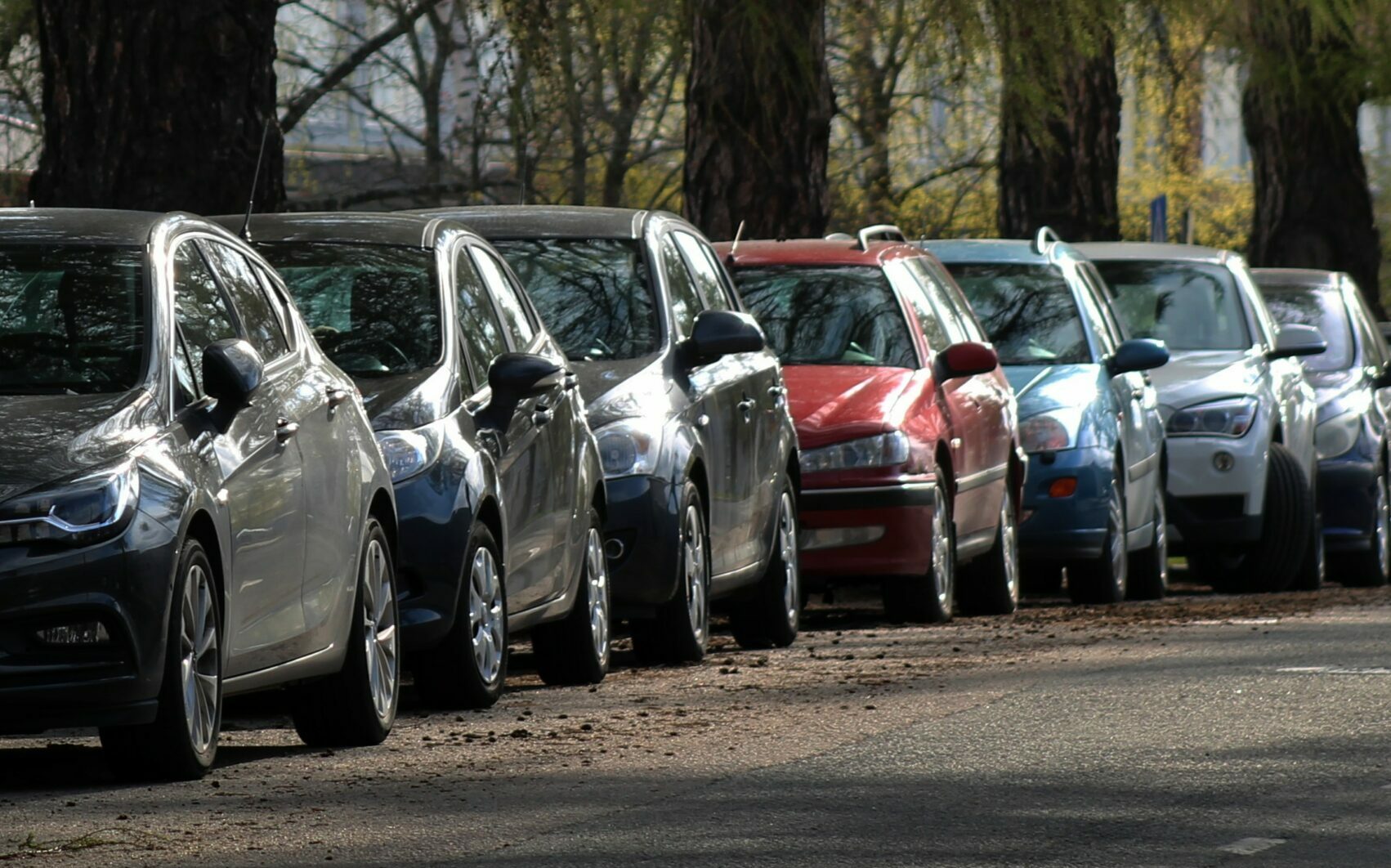
Sustainability and education: transport from the perspective of the individual and the community
One of the main parts of the campaign was education, and creating communication situations where residents can not only get a message across, but also understand the context of transport issues and approach the issue from a community perspective rather than focusing on personal problems. With this in mind, we created the flagship of the project, a PESA tram decorated inside and out, with a large part of the interior surfaces used to explain a topic in a clear and nicely illustrated way. Riding the tram is exactly the kind of situation where there is time for contemplation, passengers can examine the colourful content between two stops. This traveling exhibition shows all the possible issues of transport: space management, parking, pollution, urban sprawl, future of transportation, with interesting facts and context. In addition to the illustration of the educational content, the entire tram interior was decorated with a colorful artwork including a lot of green, creating a special atmosphere and a new travel experience.
Sustainability and education: transport from the perspective of the individual and the community

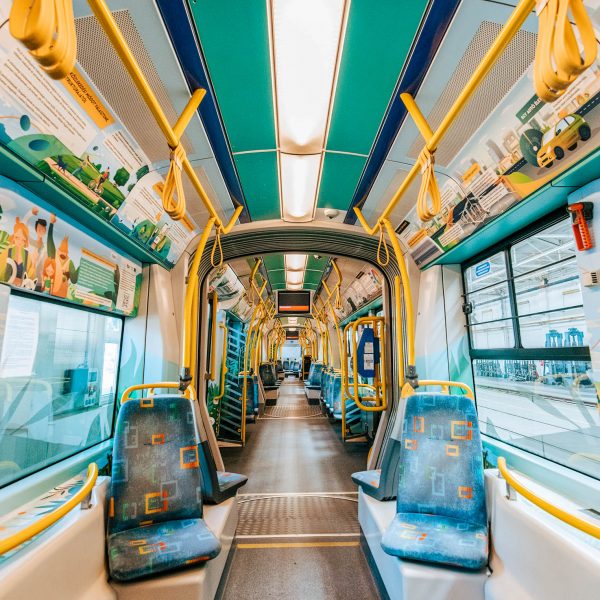
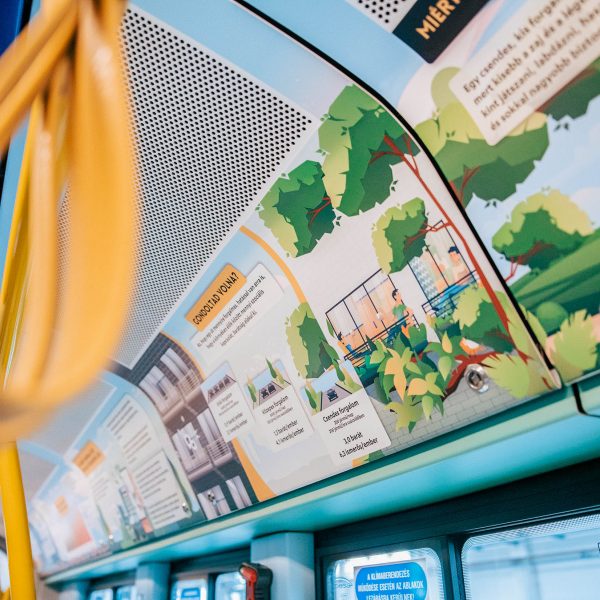
The exterior of the tram is also a powerful tool, being in traffic all day it reaches a great amount of people. Here we have designed messages specifically for drivers, and in addition to sustainability, we have also highlighted the individual benefits.” Tired of traffic jams? Come with us!”; “We have our own professional driver”; “71% of trips in Szeged are environmentally friendly. The rest travel by car.” In the campaign elements addressed to car-users, we made sure that the attitude was never offensive or aggressive. The exterior was also given an impressive green decor alongside the messages, reinforcing the link between public transport and sustainability.
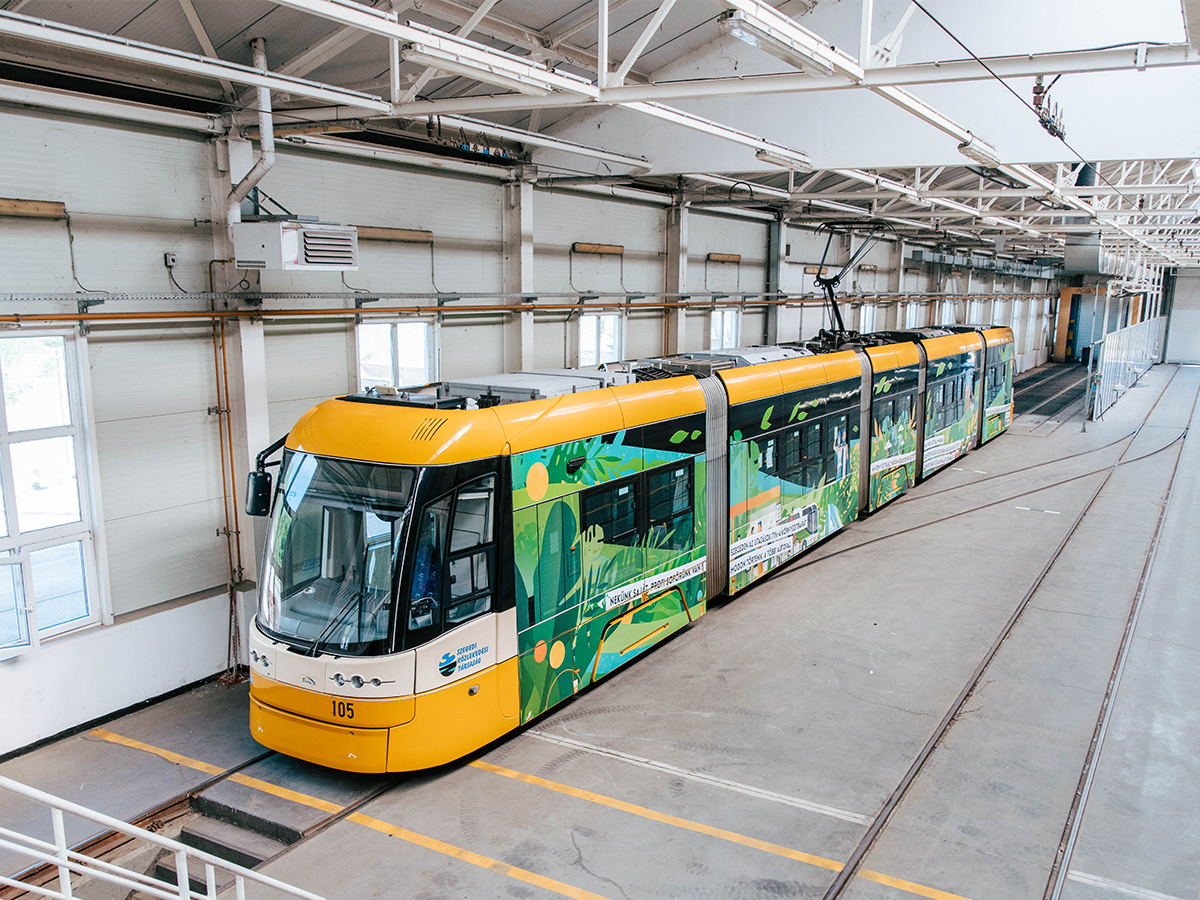
We designed another tool to encourage drivers to switch to public transportation, the “superticket”. Here we used the benefits of public transport as a message – “Is parking expensive?” “Would you stretch your legs on the way?”. These messages don’t offend the drivers either, and they end up with a gift in the form of a ticket, which makes the whole interaction absolutely positive. The theme of environmental awareness was also incorporated into the green design and the messages, but the focus was on the individual benefits of public transport. We highlighted the main differences to cars: no need to look for a parking space, no need to buy expensive parking tickets, one can read, stretch, relax, no need to stress about traffic, and all of this is sustainable.
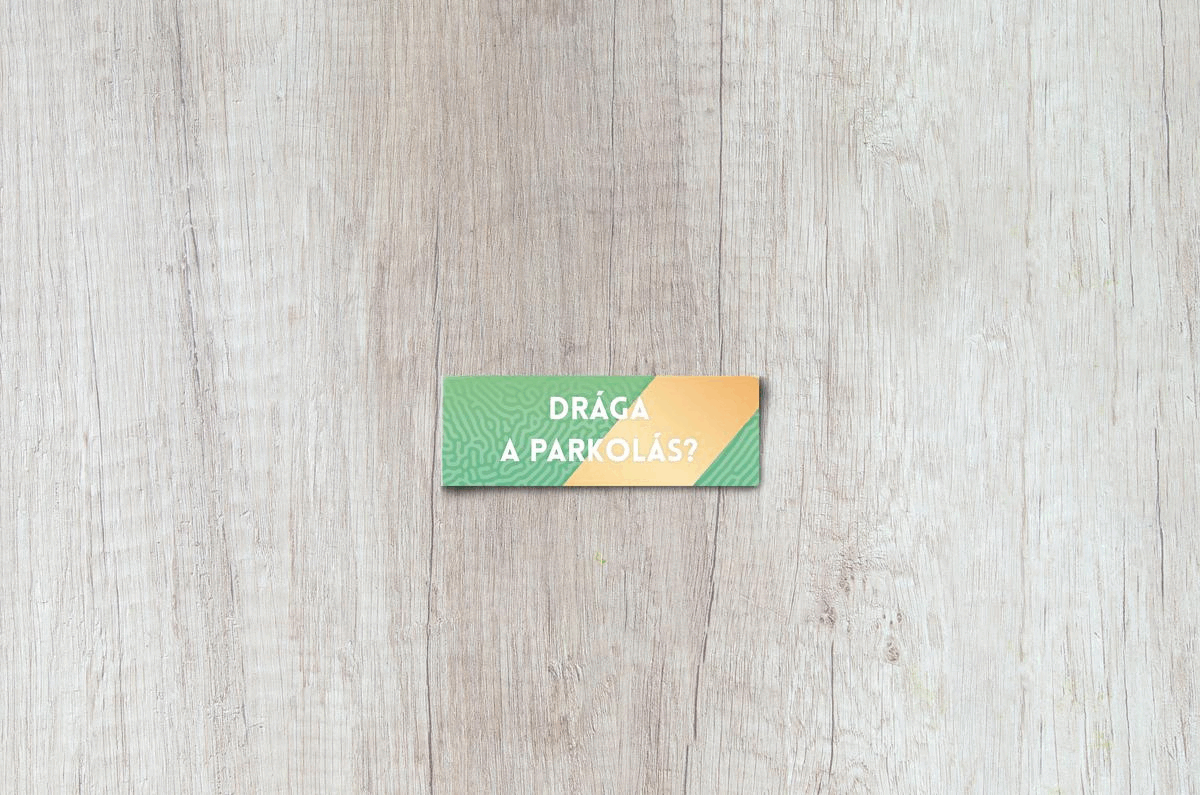
If we drive less, the city will be more liveable: this is an important connection between transport and the city, which we wanted to teach children. So we created a game called “Free your city!” and we presented it at several family events in the city. The game is very simple, there is a huge map of the city with lots of cars taking up space. Children can colour in all sorts of things, bikes, trolleys, trees, flowers, playgrounds, and stick them in place of the cars they have removed, creating a more colourful, friendly cityscape. By placing a trolleybus, more cars can be taken down, and if you stick a bicycle, you’ll have space to put a flower and a tree on the map.
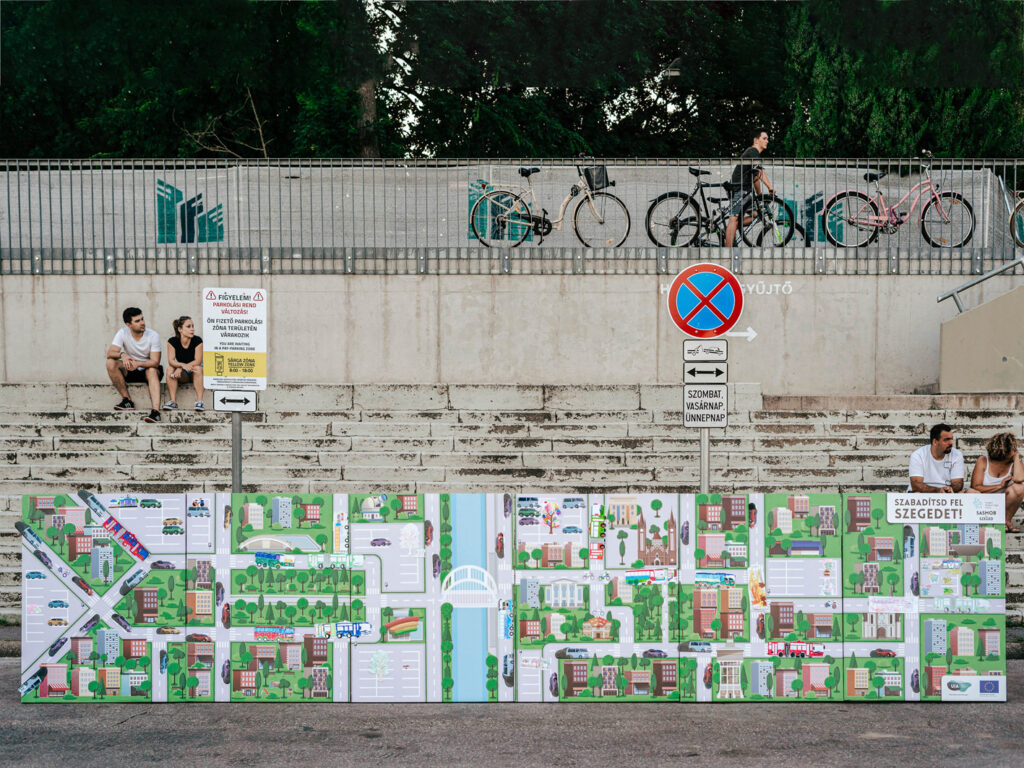
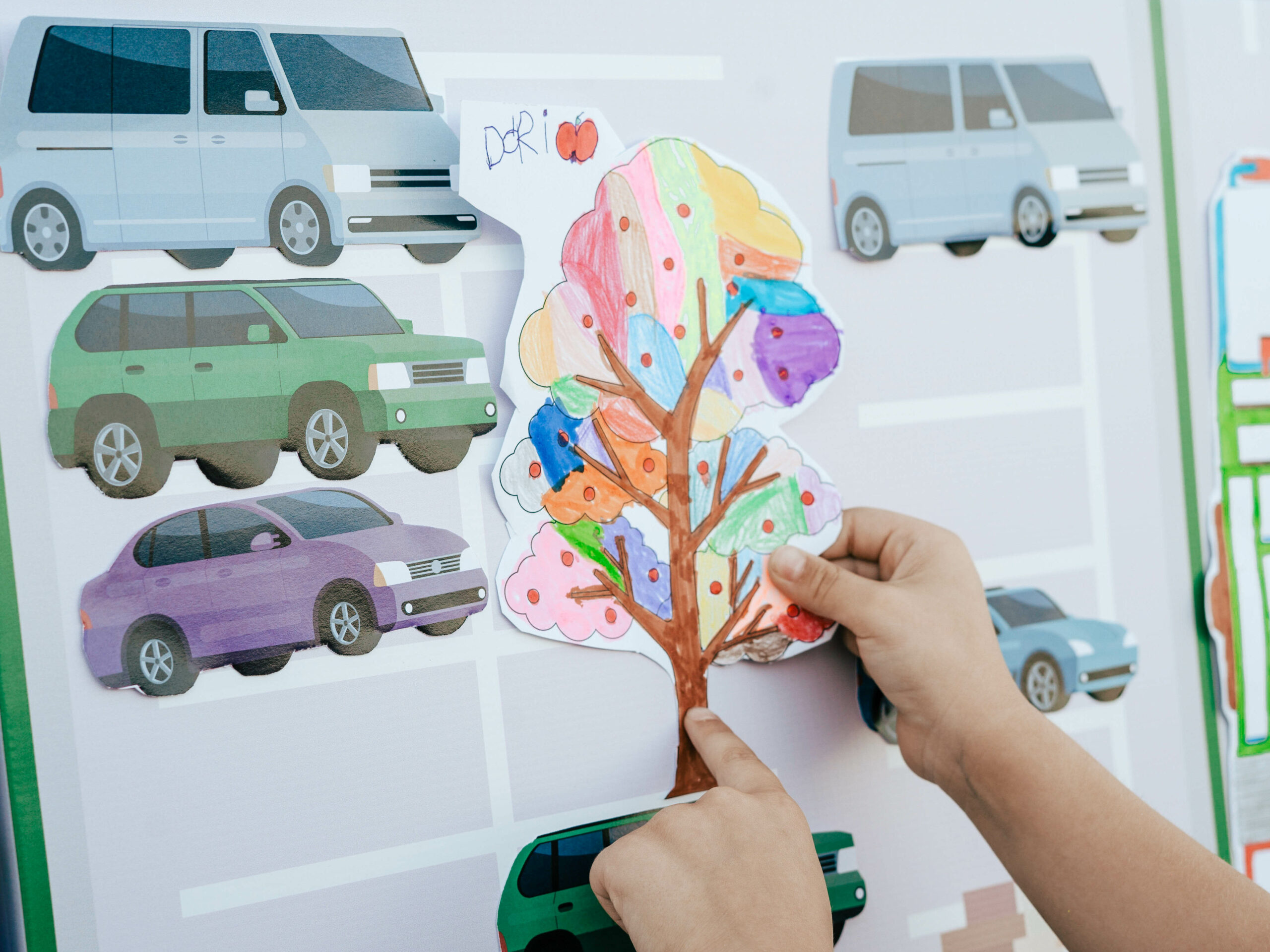
Another tool to draw attention to the space usage of cars: we placed a Parklet in a parking spot giving it new functions. The parking spot became a bikerack for 6 bikes, and the bike-owners and passers-by have a place to rest and chill, all using as much space as a single car. We have also tried to reinforce this message with the design, as the Parklet is imitating the shape of a car. This “car” does not only occupy the public space to wait for it’s owner, but can be useful for many more citizens throughout the day.
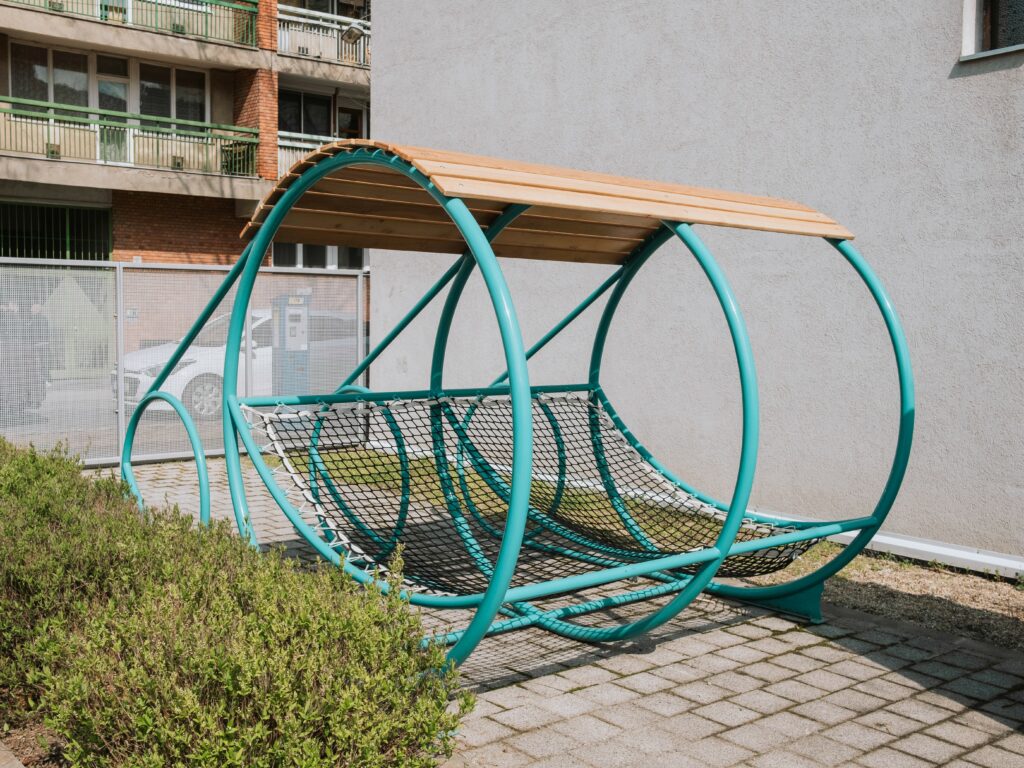

Identity reinforcement: “Thank you for traveling green!”
Besides the educational aims of the campaign, we also worked with a key message: Thank you for traveling green! The idea came from the municipality, from the vice mayor, and we have found it adequate for many reasons.
As with the whole campaign, the aim was to approach the conflictual situation with a positive, gentle attitude, and this thank-you message fitted in perfectly. The voice behind the message can be the municipality, the transport company or even the whole community, that way the message expresses that sustainable transport is in the interest of all of us. A big advantage of the message is that, as it has no negative connotations, it was easy to get organisations on our side, including the two transport companies in the city and the Hungarian Cyclist Club.
The message is also good because it identifies the target group by the environmental damage of their choice of transportation. It also shows who we are not talking about: drivers will see the message, yet we are not offensive at all. With this one sentence, we link environmental awareness with public transport, and by thanking them, we reinforce the feeling in the passengers that they are doing a good deed by getting on the tram. It is an important gesture in an environment where there is a lot of prejudice attached to public transport and its users. With this message we can create a link between the environmentally conscious identity and public transport users.
Identity reinforcement: “Thank you for traveling green!”
Besides the educational aims of the campaign, we also worked with a key message: Thank you for traveling green! The idea came from the municipality, from the vice mayor, and we have found it adequate for many reasons.
As with the whole campaign, the aim was to approach the conflictual situation with a positive, gentle attitude, and this thank-you message fitted in perfectly. The voice behind the message can be the municipality, the transport company or even the whole community, that way the message expresses that sustainable transport is in the interest of all of us. A big advantage of the message is that, as it has no negative connotations, it was easy to get organisations on our side, including the two transport companies in the city and the Hungarian Cyclist Club.
The message is also good because it identifies the target group by the environmental damage of their choice of transportation. It also shows who we are not talking about: drivers will see the message, yet we are not offensive at all. With this one sentence, we link environmental awareness with public transport, and by thanking them, we reinforce the feeling in the passengers that they are doing a good deed by getting on the tram. It is an important gesture in an environment where there is a lot of prejudice attached to public transport and its users. With this message we can create a link between the environmentally conscious identity and public transport users.
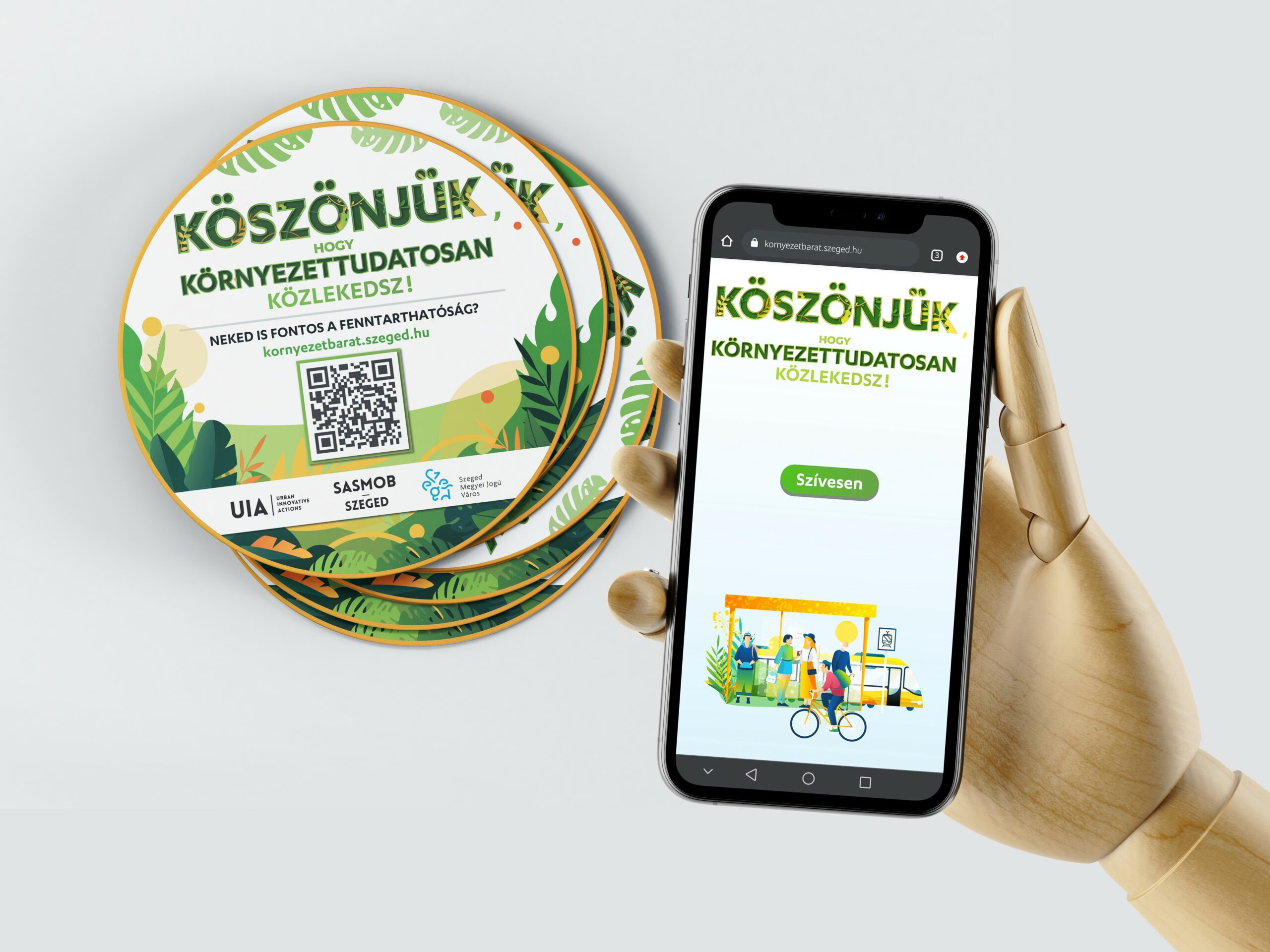
The stickers appeared on all buses, trolleybuses and trams in the city, with a QR code leading to kornyezetbarat.szeged.hu. Here, users can click on a single button, “You’re welcome”, which takes them to a message board where everyone can share what else they are doing for the environment. In this way, people can be inspired by other ideas, show their often unappreciated efforts and find themselves in a community, feeling that these small actions add up, and do make sense. This adds another layer of environmental identity and strengthens the link between sustainable transport and environmental awareness.
The “thank you” campaign was included in many places on the decorated PESA tram and it appeared in the super-ticket messages. We produced an animation with this message and advertised it on Facebook and it ran on the displays of buses, trams and trolleys. We also used more traditional tools, like a morning radio spot, and we added the message that if you are going alone and/or your things fit in a backpack, you should use public transport, walk or cycle. These smaller messages were accompanied by separate animations, which were also published on social media.

More ideas…

Header

Header

Header


